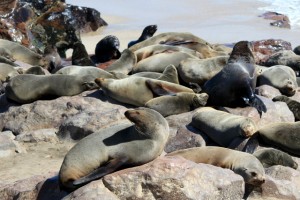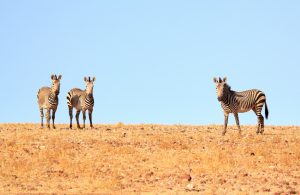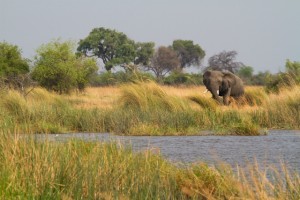Namibia is one of the top travel destinations in southern Africa, due to its outstanding scenery and landscapes that make it easier to spot wildlife than other regions of the continent. Some of the most interesting wildlife includes the Cape fur seal, and the hard-to-spot desert lion. No matter where you happen to stay in the country, you’re never that far from incredible animals. Here are the best places to see wildlife in Namibia.
Etosha National Park
Etosha National Park is the star attraction for spotting wildlife in Namibia — and for good reason. The park is popular for gemsbok, rhinos, lions, cheetahs and plenty of other large game. If you want to see lions, you’re in luck at Etosha, as it’s one of the best places to see them in southern Africa. The park is known for several large prides and they are usually easier to spot here due to the lack of grasslands. Birdlife is great in the park as well, and you can regularly spot the flamingos that fly up yearly from Walvis Bay between January and March. The park is also known for a subspecies of impala known as the black-faced impala. And if you want to see black rhino here, the Okaukuejo waterhole is a good place to start. While it’s possible to drive through the park in a day, it’s recommended to stay at one of the three public rest camps. There are also several game reserves in the area worth exploring that were formerly part of the park, such as the Onguma Game Reserve.
Cape Cross
Located in the eerie Skeleton Coast, the Cape Cross Seal Reserve is home to one of the largest Cape Fur seal colonies in Africa. The reserve is located around two hours north of Swakopmund, making it a relatively easy getaway for travelers staying at the resorts there. There are around 200,000 seals in the area, and your likely to hear their barks in the distance before you see them. You’ll also likely see hyenas and jackal that patrol the beach looking for a quick bite, along with quite a few seagulls. The best time to see the seals are between November-December when they begin giving birth in the large breeding colonies. If you can’t make it to Cape Cross to the see the seals, you can also spot them in Luderitz.
Damaraland
Located in the northwest corner of the country, Damaraland is a desert region famous for its desert-adapted creatures like elephants, Hartmann’s zebras, lions and endangered black rhinos. It’s also named after the Damara people that populate it. Throughout the park, red sands are interspersed with mountains and plains of gravel, making it fairly easy to traverse and a wild sight for the eyes. Due to a lack of trees, animals in the area can be spotted at long distances across the desert. And if you’re trying to spot black rhinos, one of the best ways to spot them is by going on a walking safari with local guides where you can follow them on foot.
Caprivi/Zambezi Region
Namibia’s Caprivi strip is situated between Angola, Botswana, and Zambia, offering access to the Zambezi River and flourishing wildlife. It has also gone by plenty of other names such as Itenge and the Okavango panhandle, and you still might see them referred to this in guidebooks. Nevertheless, the names all refer to the same places. Some of the wildlife here includes the massive amount of elephants, crocodile, hippo, leopard, waterbuck and red lechwe. There are also numerous smaller parks and reserves in the area including Caprivi Game Park, Mudumu National Park, Mamili National Park, Salambala Conservancy and the river-adjacent Kasika Conservancy.
Namib-Naukluft Park
This other-worldly park is famous for the giant sand dunes of Sossusvlei, which is worth visiting in its own right. The dunes reach as high as 900 feet and are part of one of the oldest ecosystems on Earth. Inside the park, you’ll find plenty of springbok, gemsbok, baboons, leopards and even meerkats. There are also plenty of small desert lizards roaming about if you look closely. You’ll also find dozens of dead camel thorn trees that are over 800 years old. The air is so dry in this part of the Namibia that the trees never properly decomposed when they died.






